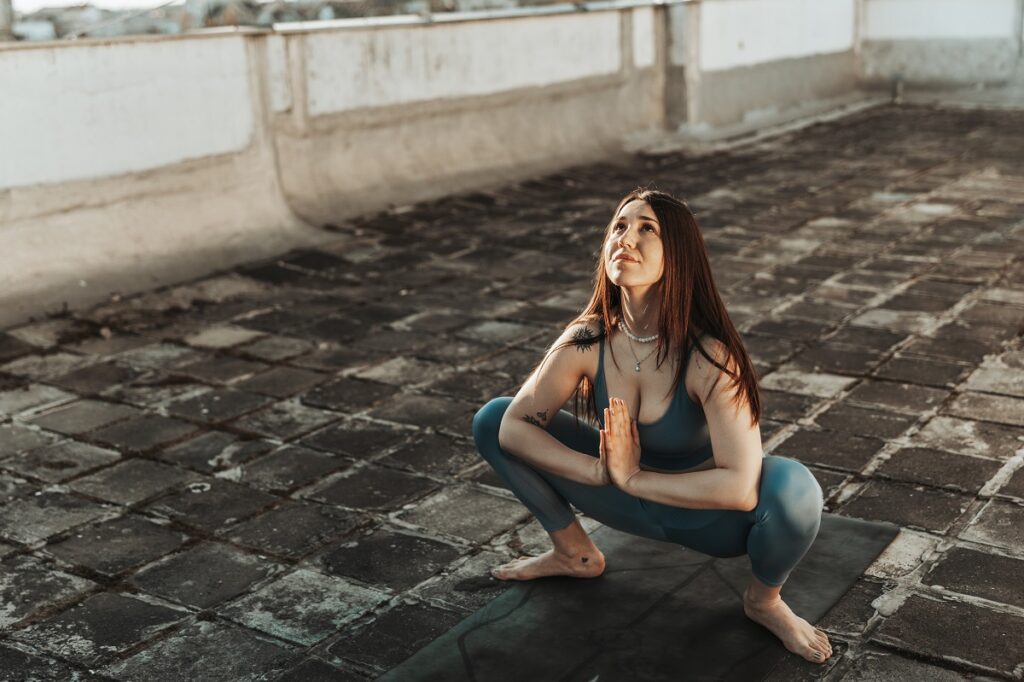Garland Yoga Pose:
Oftentimes, Garland yoga pose (or Malasana) can be a preparatory pose for meditation. Meditation usually includes prolonged periods within the seated position. Oftentimes, Garland pose can have variations, as well.
However, generally stretches the ankles, groins, hips, and back. In addition, believed to benefit digestion or aid in the function of the colon. Garland pose can be a great pose to start your day, improving areas of the body vital for normal daily activities.
Garland pose can be a helpful asana for those of us whom suffer from tight hips. Are you someone that has a job where you are sitting behind a desk the majority of the day? If so, Malasana can help!
Related Post: Yoga for Tight Hip-Flexors: Learn How to Improve Daily Mobility!

The Basics:
Name: Garland Pose
Sanskrit: Malasana
Pronunciation: (MAH-LAHS-ANAH)
Pose Level: Beginner – Intermediate yoga pose. Their are several variations/modifications to this pose.
* Also, a great pose for those pregnant ladies out there!
Step-By-Step:
- Firstly, choose a preparatory pose. Oftentimes, this can include Mountain pose or Forward Fold.
- While in Forward Fold, begin to rock side to side, breathing slowly, in and out.
- Then, spread the feet hip-width apart with your toes facing slightly outward.
- Focus on your breathing, inhaling while bending the knees slowly. Simultaneously, lowering your buttock and hips downward toward the mat
- At this time your heels may be touching the mat. However, if need be you may slightly raise the heels off the mat, using a folded blanket.
- Bring focus to your breath if being challenged, allowing you to sink deeper into the pose.
- Now, bring your hands upward in a prayer-type position, then gradually press the elbows into the inner thighs.
- Finally, come out of the pose by dropping your hands to the mat and then behind your body on the floor, coming to a seated position.
Related Pose: What is the Meaning of Pranayama: Pranayama Breathing Techniques
Anatomy:
- Pelvis
- Hips
- Ankles
- Hamstrings
- Gluteus
- Groins
Pose Modifications:
Use a folded blanket under the heels if they do not come in contact with the floor or yoga mat. Alternatively, you may just lift the heels slightly off the ground.
Contraindications:
Specifically, this pose is contraindicated if you have any acute or chronic lower back injury or knee injury. Furthermore, speaking with a medical professional and knowing your body and boundaries is crucial for your own safety.
Poses Commonly Transitioned To: Downward Facing Dog (Adho Mukha Svanasana), Noose Pose (Pasasana)
Poses Commonly Transitioned From: Bound Angle Pose (Baddha Konasana), Wide-Angled Seated Forward Bend (Upavistha Konasana), Forward Fold (Uttanasana)




